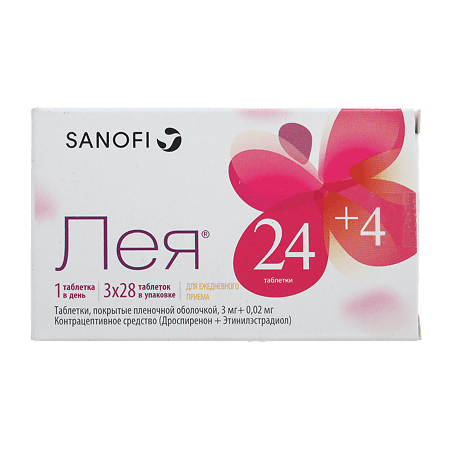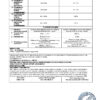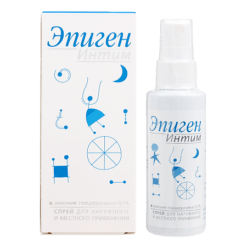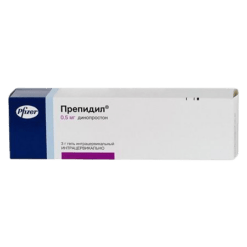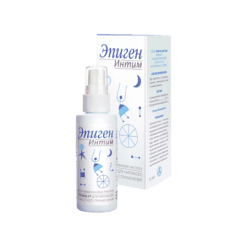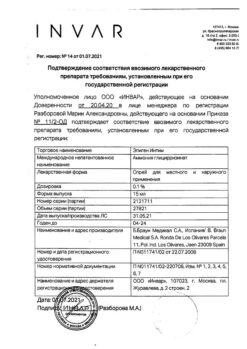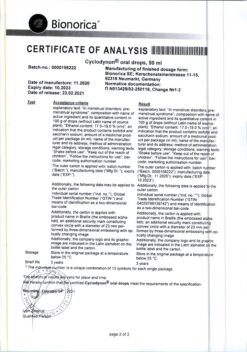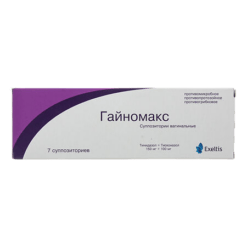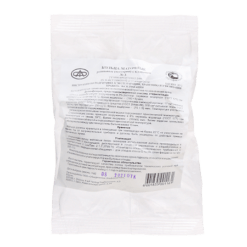No products in the cart.
Leia, 3 mg+0.02 mg 28 pcs
€19.88 €16.57
EAN: 3582910090809
SKU: 281721
Categories: Contraceptive, Gynecology and Obstetrics, Hormonal, Medicine
Description
Contraception – contraception;
Active ingredient
Active ingredient
Interaction
Interaction
Directions for use
Directions for use
Special Instructions
Special Instructions
Synopsis
Synopsis
Contraindications
Contraindications
The use of Leia is contraindicated in the presence of any of the conditions listed below; if any of these conditions occur for the first time during treatment with OCs, the use should be stopped immediately:
– Thrombosis (venous and arterial) and thromboembolism, current or history (including deep vein thrombosis, pulmonary thromboembolism, myocardial infarction), cerebrovascular disorders (includingincluding history);
– conditions preceding thrombosis (including transient ischemic attacks, angina pectoris) currently or in the past;
– hereditary or acquired predisposition to develop venous or arterial thrombosis, such as resistance to activated protein C. Antithrombin III deficiency, protein C deficiency, protein S deficiency, hyperhomocysteinemia and antiphospholipid antibodies (antibodies to cardiolipin, lupus anticoagulant);
– migraine with focal neurological symptoms currently or in the history;
– multiple or significant risk factors for venous or arterial thrombosis, including complicated cardiac valve disease, atrial fibrillation; cerebral vascular disease or coronary artery disease; uncontrolled arterial hypertension; severe dyslipoproteinemia, diabetes mellitus with vascular complications, major surgery with prolonged immobilization; smoking over the age of 35; Obesity with a body mass index (BMI) greater than 30 kg/m2; major trauma;
– Liver failure, severe liver disease (until normalization of liver function parameters);
– Liver tumors (benign or malignant), including history
– severe renal failure, acute renal failure;
– adrenal insufficiency;
– pancreatitis, including a history of history, if associated with severe triglyceridemia;
– identified or suspected hormone-dependent malignancies (including genital or mammary glands);
– vaginal bleeding of unspecified etiology;
– pregnancy or suspected pregnancy;
– period of breastfeeding;
– hypersensitivity to any of the components of Lea;
– lactose intolerance, lactase deficiency, glucose-galactose malabsorption (contains lactose monohydrate).
With caution:
If a patient has any of the conditions/risk factors listed below, the potential risks and expected benefits of using OCs, including Leia:
– Risk factors for thrombosis and thromboembolism: smoking, thrombosis (including history), myocardial infarction or stroke at a young age in any immediate family member; obesity with BMI less than 30 kg/m2; dyslipoproteinemia; controlled arterial hypertension; migraine without focal neurological symptoms; heart valve disease without complications; heart rhythm disorders;
– other diseases in which peripheral circulatory disorders may be noted: diabetes mellitus; systemic lupus erythematosus; hemolytic-uremic syndrome; Crohn’s disease and ulcerative colitis; sickle cell anemia; and phlebitis of superficial veins;
– hereditary angioedema;
– hypertriglyceridemia;
– liver disease;
– diseases that first appeared or worsened during pregnancy or on previous use of sex hormones (e.g., jaundice, cholestasis, cholelithiasis, otosclerosis with hearing impairment, porphyria, herpes of pregnancy, Sydenham’s chorea);
– postpartum period.
Side effects
Side effects
Clinical trial data
The frequency of adverse reactions is presented according to the Medical Dictionary of Regulatory Affairs (MedDRA) classification:
Very common ( â¥10%),
Frequent ( â¥1% < 10%),
Infrequent ( â¥0.1% < 1%),
Rare ( â¥0.01%
Very rare ( < 0.01%),
Frequency unknown (it is not possible to determine the frequency of occurrence from the available data).
Infectious and parasitic diseases
Infrequent: oral candidiasis, vaginal candidiasis, herpes simplex.
Immune system disorders
Infrequent: allergic reactions.
Rarely: bronchial asthma.
Infrequent unknown: hypersensitivity reactions.
Blood and lymphatic system disorders
Rarely: anemia, thrombocytopenia.
Mental disorders
Often: emotional lability.
Infrequent: depression, nervousness, sleep disorder.
Rarely: anorgasmia.
Nervous system disorders
Often: headache.
Infrequent: paresthesia, dizziness, migraine.
Rarely: tremor.
Visual organ disorders
Infrequent: conjunctivitis, “dry eye” syndrome, visual disturbances.
Hearing and labyrinth disorders
Rarely: decreased hearing.
Heart disorders
Infrequent: extrasystoles, tachycardia.
Vascular disorders
Infrequent: pulmonary embolism, increased blood pressure, decreased blood pressure, varicose veins.
Rarely: arterial and venous thromboembolism, syncope.
Respiratory system, thorax and mediastinum disorders
Infrequent: pharyngitis.
Gastrointestinal disorders
Often: nausea.
Infrequent: vomiting, gastroenteritis, diarrhea.
Rarely: constipation, abdominal pain, abdominal bloating.
Liver and biliary tract disorders
Rarely: cholecystitis.
Skin and subcutaneous tissue disorders
Infrequent: skin itching, rash, seborrhea, acne.
Rarely: alopecia, dry skin, eczema, photodermatitis, acneiform dermatosis, hypertrichosis, stretch marks, erythema nodosa, erythema multiforme.
Muscular and connective tissue disorders
Infrequent: pain in the neck, extremities, lumbar region; muscle cramps.
Renal and urinary tract disorders
Infrequent: cystitis.
Gender and mammary gland disorders
Often: pain in the mammary glands, breast engorgement, metrorrhagia, absence of menstrual bleeding.
Infrequent: mammary gland neoplasms, galactorrhea, ovarian cysts, hot flashes, incontinence, dry vaginal mucosa, pelvic pain, changes in Pap smear results, decreased libido, breast enlargement, painful menstrual-like bleeding, scant menstrual-like bloody discharge.
Rarely: cystic fibrosis, vaginitis, cervical polyp, cervical neoplasia, endometrial atrophy, heavy menstrual bleeding, dyspareunia, postcoital bleeding, abortion bleeding, increased uterine size.
Endocrine system disorders
Very rare: changes in glucose tolerance or effect on insulin resistance.
General disorders and disorders at the site of administration
Often: increase in body weight.
Infrequent: increased appetite, decreased body weight, anorexia, edema, asthenia, excessive thirst, sweating.
Laboratory and instrumental data
Infrequent: hyperkalemia, hyponatremia.
Postmarketing use data
The following serious adverse reactions with unknown frequency in women taking OCs have been reported: venous thromboembolic complications, arterial thromboembolic complications, increased blood pressure, liver neoplasms.
The association with OC use is not conclusive in the occurrence or worsening of the following conditions: Crohn’s disease, ulcerative colitis, epilepsy, uterine myoma, porphyria, systemic lupus erythematosus, herpes of pregnancy, Sydenham’s chorea, hemolytic-uremic syndrome, cholestatic jaundice, chloasma.
Acute and chronic liver dysfunction may require withdrawal of OC until markers of hepatic function return to normal.
In women with hereditary angioedema, exogenous estrogens may cause a manifestation or exacerbation of the disease.
The incidence of breast cancer among women taking OCs is slightly increased, although a causal link to OC use has not been established.
Overdose
Overdose
Similarities
Similarities
Additional information
| Shelf life | 2 years. Do not use the drug after the expiration date stated on the package. |
|---|---|
| Conditions of storage | Store in a dry place at a temperature not exceeding 30 °С. Keep out of reach of children. |
| Manufacturer | Sindea Pharma S.L., Spain |
| Medication form | pills |
| Brand | Sindea Pharma S.L. |
Related products
Gynecology and Obstetrics
Prepidil, intracervical gel 0.5 mg/3 g syringes with catheter
Gynecology and Obstetrics
Buy Leia, 3 mg+0.02 mg 28 pcs with delivery to USA, UK, Europe and over 120 other countries.

